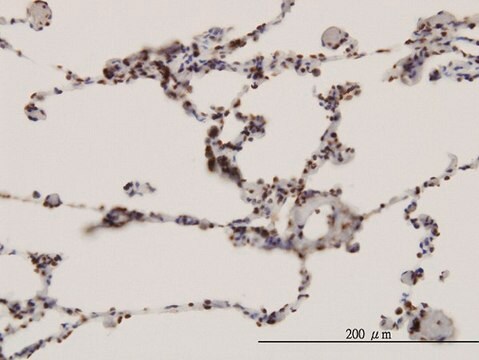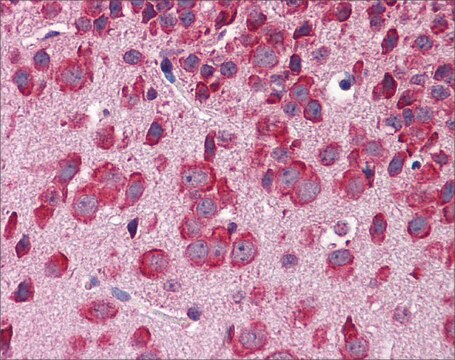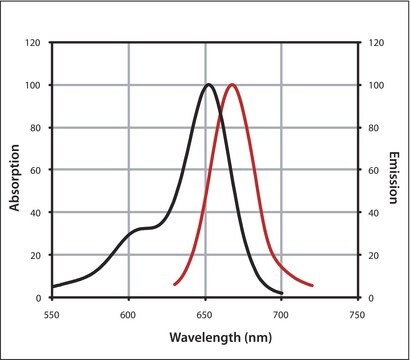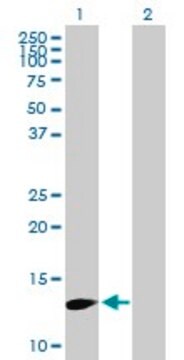F2055
Monoclonal Anti-hFBXW7 in Maus hergestellte Antikörper
clone FB407, purified from hybridoma cell culture
Synonym(e):
Anti-ARCHIPELAGO (Drosophila), Anti-Cdc4 (S. serevisia), Anti-F-Box and WD40 Domain Protein 7, Anti-FBW7, Anti-SEL-10 (C. elegance)
About This Item
Empfohlene Produkte
Biologische Quelle
mouse
Konjugat
unconjugated
Antikörperform
purified from hybridoma cell culture
Antikörper-Produkttyp
primary antibodies
Klon
FB407, monoclonal
Form
buffered aqueous solution
Mol-Gew.
antigen ~60 kDa
Speziesreaktivität
rat, human, mouse
Konzentration
~2 mg/mL
Methode(n)
immunocytochemistry: 10-20 μg/mL using human A431 or HeLa cells
indirect ELISA: suitable
western blot: 5-10 μg/mL using human A431 cell extracts
Isotyp
IgG2a
UniProt-Hinterlegungsnummer
Versandbedingung
dry ice
Lagertemp.
−20°C
Posttranslationale Modifikation Target
unmodified
Angaben zum Gen
human ... FBXW7(55294)
mouse ... Fbxw7(50754)
Allgemeine Beschreibung
Spezifität
Immunogen
Anwendung
- enzyme-linked immunosorbent assay (ELISA)
- immunoblotting
- immunocytochemistry
Biochem./physiol. Wirkung
Physikalische Form
Haftungsausschluss
Sie haben nicht das passende Produkt gefunden?
Probieren Sie unser Produkt-Auswahlhilfe. aus.
Lagerklassenschlüssel
10 - Combustible liquids
WGK
WGK 3
Flammpunkt (°F)
Not applicable
Flammpunkt (°C)
Not applicable
Persönliche Schutzausrüstung
Eyeshields, Gloves, multi-purpose combination respirator cartridge (US)
Hier finden Sie alle aktuellen Versionen:
Besitzen Sie dieses Produkt bereits?
In der Dokumentenbibliothek finden Sie die Dokumentation zu den Produkten, die Sie kürzlich erworben haben.
Unser Team von Wissenschaftlern verfügt über Erfahrung in allen Forschungsbereichen einschließlich Life Science, Materialwissenschaften, chemischer Synthese, Chromatographie, Analytik und vielen mehr..
Setzen Sie sich mit dem technischen Dienst in Verbindung.








